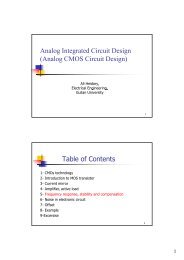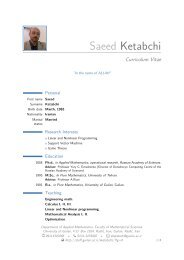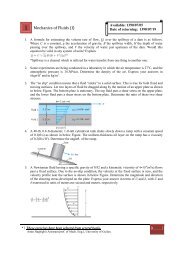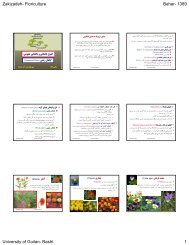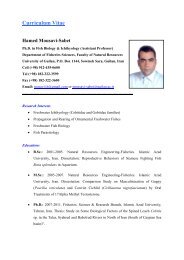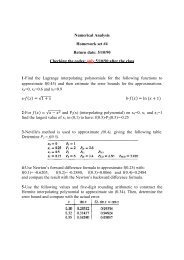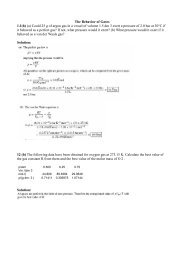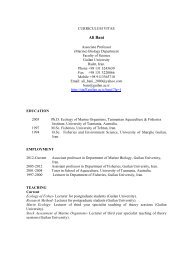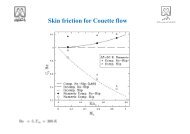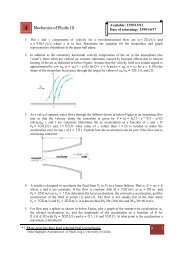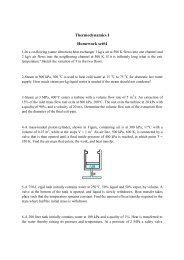Medical Tourism in Developing Countries
Medical Tourism in Developing Countries
Medical Tourism in Developing Countries
- No tags were found...
You also want an ePaper? Increase the reach of your titles
YUMPU automatically turns print PDFs into web optimized ePapers that Google loves.
Promot<strong>in</strong>g <strong>Medical</strong> <strong>Tourism</strong> ● 143American companies <strong>in</strong>creas<strong>in</strong>gly face <strong>in</strong>ternational competition. Furthermore,with the advent of new technology, the statute will have to evolve from itsorig<strong>in</strong>al purpose as a remedy to the problem of overseas mechanical assembly,to previously unforeseen circumstances. The software <strong>in</strong>dustry, for example,has already provoked the serious judicial <strong>in</strong>spection of § 271(f) as the provisionapplies to computer code as a component. 7 Similarly, as an <strong>in</strong>dustry likepharmaceuticals evolves and follows the trend of <strong>in</strong>ternationalization, anunderstand<strong>in</strong>g of § 271(f) as it applies to that <strong>in</strong>dustry will have to evolveconcurrently. Thus § 271(f) has a solid presence <strong>in</strong> the future of patent litigation,primarily <strong>in</strong> a world that is <strong>in</strong>creas<strong>in</strong>gly smaller and more <strong>in</strong>tegrated.The mean<strong>in</strong>g and purpose of the statute will have to evolve organicallydepend<strong>in</strong>g on the needs of new technological sectors.Because § 271(f)(1) and (2) cover both potentially non<strong>in</strong>fr<strong>in</strong>g<strong>in</strong>g componentsand specifically targeted components, many factual scenariospresented by personalized medic<strong>in</strong>e fall under the statute. Any component,therefore, whether it is patentable by itself, or even necessarily onlyused <strong>in</strong> conjunction with a patented <strong>in</strong>vention, will apply. Thus bodilyfluids or cancer cells, taken for the express purpose of diagnostic test<strong>in</strong>g,could certa<strong>in</strong>ly be considered a component. Even though they are notpatentable <strong>in</strong> their own right, under § 271(f)(1), the send<strong>in</strong>g of these cellsor cultures abroad for the express purpose of test<strong>in</strong>g certa<strong>in</strong>ly meets the“actively <strong>in</strong>duce[d]” requirement of the statute. In this scenario, the determ<strong>in</strong>ationwould rest on whether a court considered the cells “a substantialportion” of the parts of a diagnostic test; as the test and diagnosis couldnot be made without them, it is likely such a component could be“substantial.” In the scenario where a U.S. lab would take samples andperform tests, but then send data abroad to be <strong>in</strong>terpreted, the analysis issimilar. Because many diagnostic tests are protected by process patentsthat <strong>in</strong>clude the identification of a particular genetic type and the subsequenttreatment for that specific type, the export of test results is still verymuch <strong>in</strong> the realm of that process patent. In this case, liability would fallunder § 271(f)(2), because the data conta<strong>in</strong><strong>in</strong>g the results is especiallyadapted for use <strong>in</strong> a particular <strong>in</strong>vention, and the requirements of thestatute are clearly met when a hospital abroad is deal<strong>in</strong>g with such aspecialized area of medic<strong>in</strong>e. As to the possibility of a hospital abroadpurchas<strong>in</strong>g compounds that make up a diagnostic test from a U.S. basedcompany, liability could attach under either § 271(f)(1) or (2). If aU.S. company sells a very specific compound whose use is limited to aparticular test or treatment process, that company could be liable under§ 271(f)(2) for know<strong>in</strong>gly supply<strong>in</strong>g a component of a patented <strong>in</strong>vention





